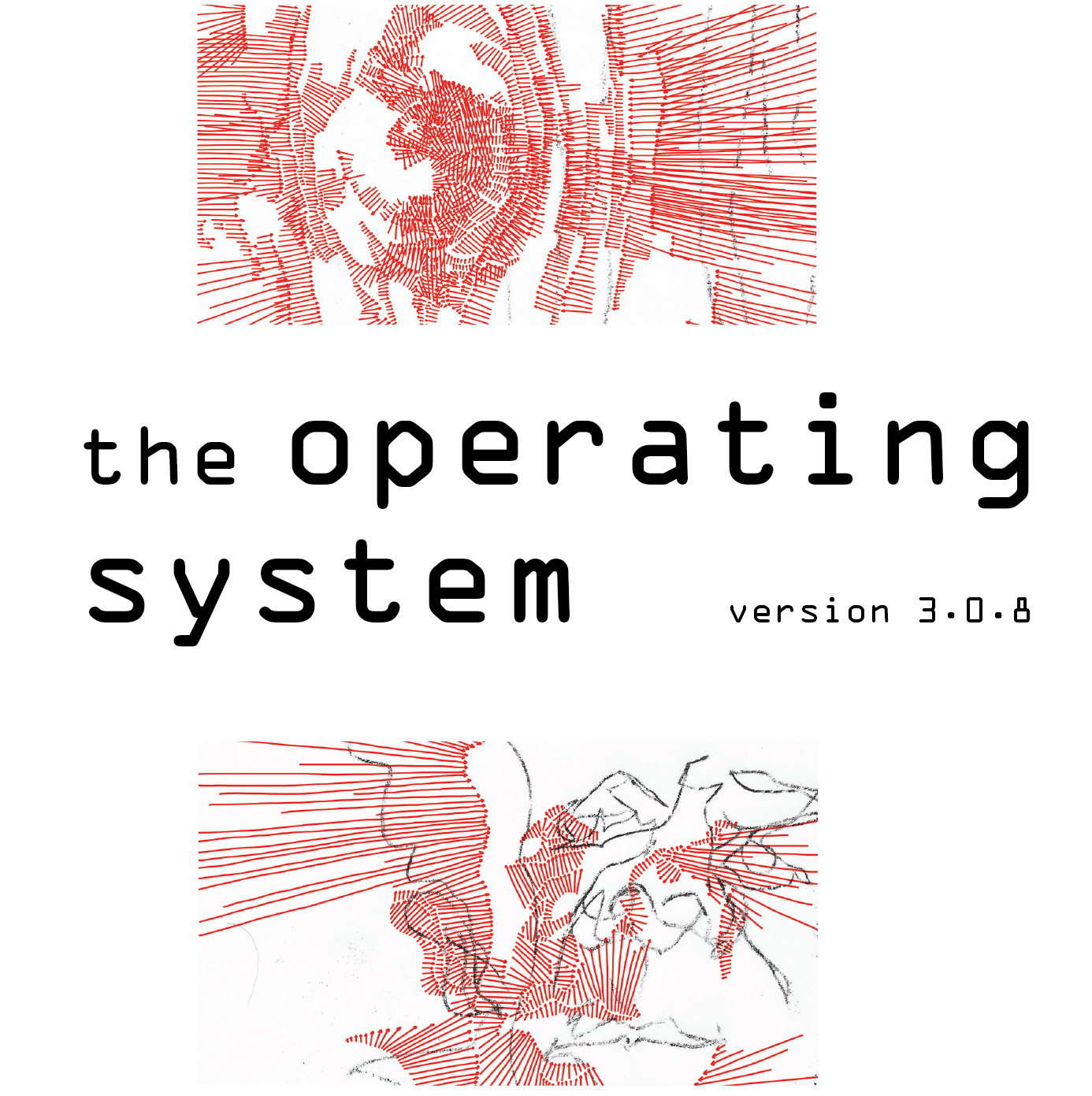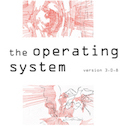REMAIN COMPOSED :: TODD LEREW :: FIELD NOTES :: THOUGHTS on MUSICAL FAILURE, PT. I
Latest sounds by Todd Lerew
[box] For this special feature in our ongoing Field Notes series (where creators from all disciplines shine light behind the curtain at their daily practice — revealing the often messy, sometimes frustrating, surprisingly beautiful life along the way) the OS is excited to have composers Todd Lerew, Kristina Warren and Michael Laurello, finalists in the 2014 American Composers Forum National Composition Contest. Lerew, Warren, and Laurello will each share their process notes with us as they develop new work from now through July, when the pieces will premiere at the Sō Percussion Summer Institute at Princeton University. Get better introduced – and listen to samples from these innovative new composers — at our series introduction, HERE. But now, without further ado, Todd Lerew will kick off this series with a perfect Field Notes topic: dealing with repeated unsuccessful attempts at an idea. We feel you Todd! And hey, reader: for a fully sensory experience, why don’t you play some of his music direct from Soundcloud (above) while you read this?! THE FUTURE IS NOW![/box]
[script_teaser]I’ve been asked to write a few posts about my working methods as a composer, particularly with regards to a piece currently in progress for the New York-based quartet, So Percussion. Since my process for this piece has up to this point been marked by a series of failures, I thought it might be of interest to describe what has not been working, with the intention of sharing some additional thoughts on the role of failure in music in a subsequent post. – Todd Lerew[/script_teaser]
[h3]first attempt: filling drums with gases[/h3]
Following the important work of composers such as Alvin Lucier, Maryanne Amacher, and James Tenney, I am very interested in the physical properties of sound, and am drawn to music that explores elements of how sound behaves and is perceived. Most people have experienced the effect helium has on one’s voice when inhaled, and I was curious to discover whether the act of filling a drum with the gas would elicit comparable results.
When you inhale helium and speak, the fundamental frequency (pitch) of the voice actually remains unchanged, but the resonance in your vocal cavity shifts to emphasize higher frequencies already present in the sound, giving the effect of a squeaky voice. That is to say that the original motion of the vocal folds is unaffected, but the fact that the sound next passes through a gas of lower density than air, in
which the speed of sound is slower, results in the amplification of higher formants (i.e. sections of the full spectrum of frequencies present in the voice). Since the sound of a drum is spectrally very rich (noisy), my hope was that this shift in resonance would be easily perceived by displacing the air in a mostly-closed drum with helium, and that the abstract nature of this sound would prevent any such change from being primarily goofy, as the altered speech tends to be.
[textwrap_image align=”left”]http://www.theoperatingsystem.org/wp-content/uploads/2014/03/helium-e1396282487274.jpg[/textwrap_image] With a small tank of helium, easily acquired from a party supply store, I attempted several crude experiments. I tried pumping helium directly into the air vent hole in the side of two otherwise closed drums (a floor tom and a snare), but could observe no change in the resonance. The only way the sound was affected in this process was if the seal was sufficiently tight that pressure could build inside the drum and push against the drumhead. This increased tension on the head does raise the fundamental mode of vibration, but the effect can be achieved simply by blowing into this hole, and was not assisted by the presence of the helium. I then tried bursting helium-filled balloons inside the drums while playing, and although the sound was quite nice, it was undistinguishable from the sound of the same process with air-filled balloons. Shortly thereafter, I was forwarded a source stating that helium is the most difficult gas to contain, and began to suspect that it may not be possible to get the gas to actually displace the air in a drum before it quickly dissipates.
I’d been made aware of another gas, sulfur hexafluoride (SF6), which is more dense than air and has the opposite effect from helium on the voice when inhaled. (Check out this video for a good demonstration of the effects.)
Since SF6 is relatively heavy, it is much more easily contained, and my feeling was that it would more readily alter the resonant characteristics of the drums. After a bit of running around to several gas distributors in my attempt to obtain a small amount of SF6, I was put in touch with a specialty gas provider. As it turns out, what the pop-science videos don’t tell you is that although SF6 is non-toxic and non-flammable, it is a potent greenhouse gas, and has come under fire from environmental groups in the last decade or so due to its effect on the environment.
As a result, the gas is now strictly regulated and prohibitively expensive. Being unable to spend nearly $1000 on a small tank and regulator with no certainty that it would produce interesting results, and not wanting to register my activities for supervision by the State of California, I was forced to abandon the idea of obtaining the gas.
There are other commercially available gases, such as argon, that are heavier than air, but since their density does not significantly differ from that of air, the change in the speed of sound is negligible. Having gotten to the point that further steps towards this idea seemed impractical, I decided to seek inspiration elsewhere.
[h3]second attempt: heat shrink drumheads[/h3]
[textwrap_image align=”right”]http://www.theoperatingsystem.org/wp-content/uploads/2014/03/heatshrink-film-e1396282672631.jpg[/textwrap_image] It is likely clear by now that I have an interest in the sonic potential of traditionally non-musical materials. This seems to follow quite naturally from an investment in the peculiarities of the physical properties of sound, as existing musical instruments are already part of a constant and rigorous search for new musical application and expression, whereas many other substances remain relatively unsurveyed from this perspective. This may also be why I tend to get along with percussionists.
As the use of different gases began to lose practical appeal, I started to think about heatshrink film, and wondered whether it would be possible to make drumheads out of this material. I ordered a roll of the film, taped a section of it onto a snare drum with the head removed, and in the process of shrinking it (and melting holes due to my uneven heating method), it became clear that the film would maintain a crinkly quality and was too thin to be of acoustic interest.
The same distributor from which I obtained the film also sells a much heavier industrial heatshrink wrap – of the variety that is used to cover boats and other machinery for storage or transportation – with a thickness equivalent to that of many standard drumheads, and this seemed an obvious next move. In addition to taping, I used an embroidery hoop as a clamp to hold the wrap firmly in place around the rim of the drum. By heating it more evenly with an electric heat gun (as opposed to the lack of control in previous attempts with a small blowtorch), I was able to bring the wrap to a reasonable tension and a decent, boomy tone when struck. But as I continued heating the wrap, it failed to further increase tension over the drum, and maintained an acceptable yet unremarkable low sound.
[textwrap_image align=”left”]http://www.theoperatingsystem.org/wp-content/uploads/2014/03/heatshrink-wrap-with-embroidery-hoop-e1396282837341.jpg[/textwrap_image]Since the initial interest in this material was in the possibility of dramatically adjusting the tension (while playing) to observe a shift in resonant characteristics, its unwillingness to demonstrate a satisfying transformation did not bode well for the idea. Perhaps a larger problem was in the fact that by heating the wrap, it is essentially being slightly melted, slackened, and only contracts and tightens as it cools. While hot, the wrap is too soft to be struck by drumsticks, and the actual process of making this change audible as I had imagined it was not going to be possible.
——————————————————————
There can be few composers who have not experienced the occasional disappointment of an idea not working out as imagined, nor must it be common for the finished product of a piece to precisely represent its generative conception, but I think it comes with the territory of attempting non-traditional methods or unintended uses for materials that one makes oneself particularly susceptible to failure. I do not mean to suggest that I have empirically demonstrated that no version of these ideas may be executed successfully, but rather to simply state that when I see no practical and reasonable means of moving forward without obscuring the desired effect, I tend to abandon the idea (at least temporarily) in favor of apparently more promising endeavors.
No proposition is sufficiently simple that it is without complications, and I have learned through various attempts at reducing a piece to a single idea that there exists no direct relation between the ease with which a situation can be described and the manner in which it is successfully realized. To the extent that failure is indispensible, it can also be taken as a subject of interest. In my next post, I hope to examine the ways in which failure itself can be made musical.
[box]
[line]
[textwrap_image align=”left”]http://www.theoperatingsystem.org/wp-content/uploads/2014/03/photo1-e1396283921813.jpg[/textwrap_image]
TODD LEREW (b. 1986) is a Los Angeles-based composer working with invented acoustic instruments, repurposed found objects, and unique preparations of traditional instruments. Lerew is the inventor of the Quartz Cantabile (ed: just wait until you see this thing), which utilizes a principle of thermoacoustics to convert heat into sound (!), and has presented the instrument at Stanford’sCCRMA, the American Musical Instrument Society annual conference, the Guthman Musical Instrument Competition at Georgia Tech, and Machine Project in Los Angeles. He is the founder and curator of Telephone Music, a collaborative music and memory project based on the children’s game of Telephone, the last round of which was released as an exclusive download to subscribers of music magazine The Wire. His solo piece for e-bowed gu zheng, entitled Lithic Fragments, is available on cassette on the Brunch Groupe label. His pieces have been performed by members of the San Francisco Symphony Chorus, the Wet Ink Ensemble (New York), the Now Hear Ensemble (Santa Barbara), and the Canticum Ostrava choir (Czech Republic).
If you missed the Soundcloud link at top, here’s another chance to hear Lerew’s original compositions. Enjoy!
Latest sounds by Todd Lerew
[line]
[recent_post_thumbs border=”yes”]


